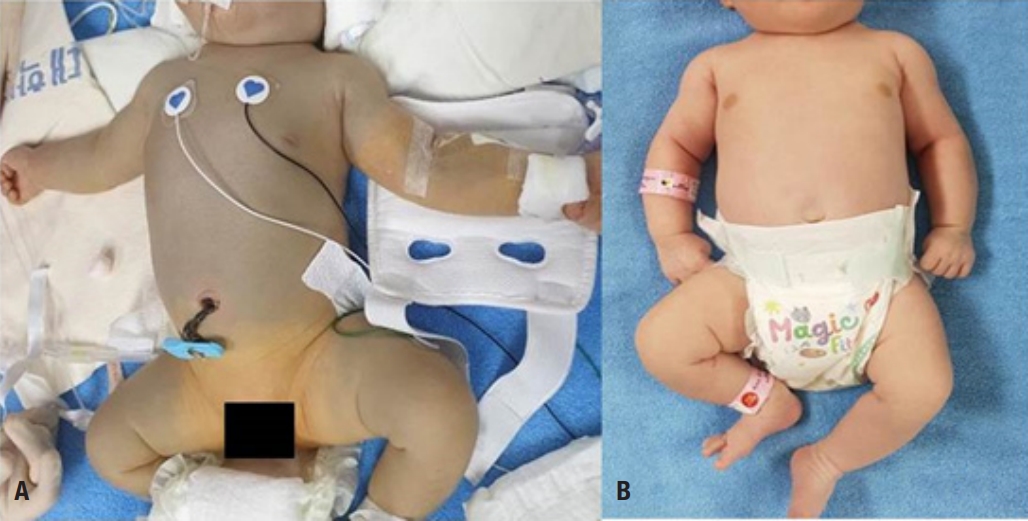- Original Article
- Neonatology (Perinatology)
- Neonatal sepsis-causing bacterial pathogens and outcome of trends of their antimicrobial susceptibility a 20-year period at a neonatal intensive care unit
-
Woo Sun Song, Hye Won Park, Moon Youn Oh, Jae Young Jo, Chae Young Kim, Jung Ju Lee, Euiseok Jung, Byong Sop Lee, Ki-Soo Kim, Ellen Ai-Rhan Kim
-
Clin Exp Pediatr. 2022;65(7):350-357. Published online December 9, 2021
-

|
Question: What is prevalence of bacterial pathogens causing sepsis and their antimicrobial susceptibility over 20 years?
Finding: Coagulase-negative remains most common causative organism. The most common gram-negative organism was Klebsiella pneumonia. The susceptibility of staphylococcus aureus and K. pneumonia showed increased susceptability to oxacillin, cefotaxime and amikacin, gentamicin, respectively.
Meaning: Answers to the question asked is important in choosing antimicrobials and to monitor emergence of multidrug-resistant organisms. |
-
-
- Case Report
- Parotid sialolithiasis in a two-year-old boy
-
Do Hoon Kim, Woo Sun Song, Yeong Jin Kim, Won Duck Kim
-
Clin Exp Pediatr. 2013;56(10):451-455. Published online October 31, 2013
-
|
|
Sialolithiasis is caused by the obstruction of a salivary gland or its excretory duct by the formation of calcareous concretions or sialoliths; this results in salivary ectasia and provokes subsequent dilation of the salivary gland. Sialolithiasis is relatively common, accounting for 30% of salivary diseases; however, it is rarely observed in childhood. This case report describes a 2-year-old male patient... |
-
-
|














